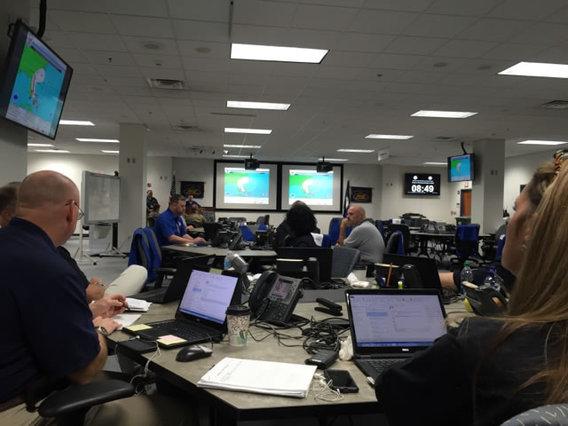Mission
The mission of the Region III Response Division is to coordinate and provide federal disaster response capability to state, tribal, and local governments to support life-saving and life-sustaining capabilities.

Components
The following are the components of the Response Division:
Operational Planning Branch
The Operational Planning Branch develops deliberate and hazard specific plans, National Special Security Events (NSSEs) Incident Action Plans, and initial regional incident support plans for emerging disasters. Embedded within the Operational Planning Branch is the Region III Disaster Emergency Communications Coordinator (DECC), Geographical Information System (GIS) Program, and Hurricane Program. The DECC serves as the Regional Emergency Communications Coordination Working Group (RECCWG) Chair. The Coordinator provides Regional tactical disaster emergency communications capabilities to support all-hazards disaster response and recovery and national security emergency requirements. The GIS Program develops disaster mapping and analytical products to subject matter experts and senior leaders to assist in course of action development. The Regional Hurricane Program works with state and local emergency management stakeholders to develop regional plans, evacuation requirements, and training needs for hurricane prone jurisdictions.
Logistics Branch
The Logistics Branch plans, manages, and sustains regional logistics response and recovery operations in support of disaster operations and special events. The Logistics Branch synchronizes with FEMA’s Logistics Management Directorate to determine the appropriate level of federal support prior to, and during a federally declared disaster. The branch actively works with state emergency management stakeholders in developing and strengthening state resource management and logistics programs.
Operations Integration Branch
The Operations Integration Branch ensures the effective regional coordination, integration, and implementation of disaster operations, programs, and activities. The branch’s functions include: federal agency coordination, training and exercises, situational awareness through the Regional Watch Center (RWC), and the operation of Regional Response Coordination Center (RRCC). The RWC maintains 24 hour / 7 days a week Regional situational awareness to collect information, conduct analysis, determine possible impacts, and identify incidents within the FEMA Region III areas of responsibility. The RWC links the RRCC, State EOCs, Regional DHS components, Regional Emergency Support Functions (ESFs), State Fusion Centers, Joint Terrorism Task Forces (JTTFs), and other key state and local operations centers. The RRCC provides incident support to deployed field teams through its three main sections: resource support, situational awareness, and planning.
Incident Management Assistance Team Branch
The Incident Management Assistance Team (IMAT) is a rapidly deployable team of federal emergency management personnel that provides incident management assistance to state, local, and tribal governments prior to, during, or after a disaster. The 12 person team is led by a Team Leader and has dedicated staff in External Affairs, Operations, Planning, Logistics, and Finance & Administration Sections. Region III has one full-time Type II IMAT and two collateral duty Type III IMATs.

Regional Interagency Steering Committee
The Regional Interagency Steering Committee (RISC) is made up of state, local, and federal emergency managers who meet regularly to share information, exchange ideas, and build cross capabilities in response and recovery throughout the region. This group meets twice a year to discuss new trends in emergency management, events and disasters, and updates from specific programs and states on new initiatives. Some members of the RISC are also represented on the Regional Advisory Council (RAC). Each FEMA Region has it's own RISC.

Any questions should be directed to Region III Operational Planning at FEMA-R03-Plans@fema.dhs.gov.
Regional Emergency Crisis Communications Working Group (RECCWG)
The Regional Emergency Communications Coordination Working Group (RECCWG) serves as the single, regional coordination point for emergency communications preparedness, response, and recovery for federal, state, and local governments within Region III. This group also provides tactical disaster emergency communications capabilities to support all-hazards disaster response and recovery and national security emergency requirements in the Region and among other regions as needed.
The RECCWG reports to the Regional Administrator and is led by the Disaster Emergency Communications Coordinator.
